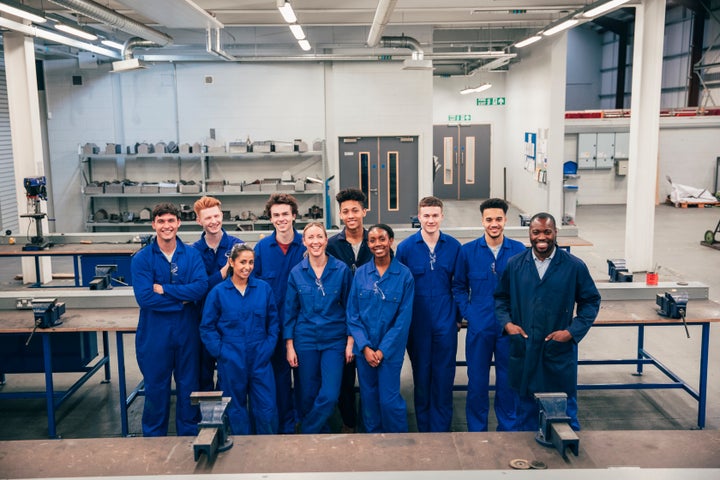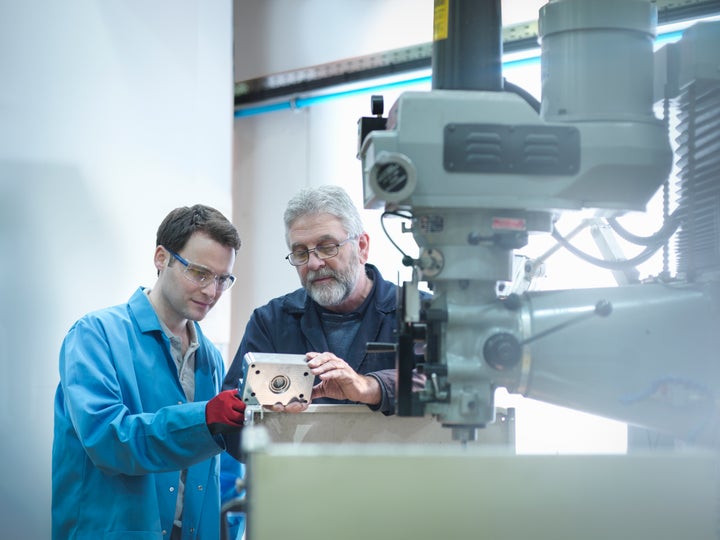
For many small to medium-sized business owners, closing the skills gap is a top priority in the quest to keep their business moving.
A recent survey by the Open University Business Barometer has revealed that companies are turning to work-based training and employment schemes to address the issue, and with great success.
SDE Technology, a leading manufacturer of metal pressings and assemblies, is a prime example of this. The Shropshire-based firm is known for its cutting-edge technologies but it’s also ahead of the curve with regard to attracting, training and retaining new talent with its own on-site training centre.
Since its launch in 2017, the centre, which takes on apprentices and equips them with the skills to work in manufacturing as they gain new qualifications, has seen 12 apprentices pass through its doors — many of whom have gone on to hold management positions within the company. Currently, it has three apprentices in engineering roles across the business, with four more joining in the next cohort.
Work-based training, such as apprenticeships, combines classroom learning with on-the-job experience in a variety of subjects, including engineering, digital, and green skills. These pathways provide businesses with the opportunity to shape the talent they need, both in terms of acquiring new recruits and upskilling existing staff.
“We get the chance to pass on and capture skills and can invest in the next generation of employees. It also sends a great message to the rest of the team that we are both embracing and investing in the future”
- says Christoper Greenough at SDE.
Benefits
The benefits of hiring apprentices are numerous. The Chartered Institute of Personnel and Development (CIPD) reports that 80% of businesses employing apprentices have been able to maintain or improve the skills their employees need for the future, while 70% have seen improvements in the goods and services they offer.
Greenough, who has been at SDE for 28 years, started on the shop floor, where he worked as a press operator before becoming team leader, then logistics manager, and now chief commercial officer. As someone who doesn’t feel he thrived in a classroom environment doing A Levels, he’s a passionate advocate for the benefits of hands-on experience and training as a way to motivate the next generation of talent.
“I learn through experience. Vocational learning would have been great for me, but I was never given that option at school, whereas now, others are.”
Investing in the future
Alex Malam, 26 years old, is another SDE employee who, like Greenough, has done “every role in the business”. Unlike Greenough, his journey at the company began as an apprentice — spending five years working in the tool room before moving to quality, then to new product introduction (NPI) in the projects department.
Nine years in, he has his Level 2 and 3, and has completed his Higher National Certificate (HNC) in engineering, enabling him to work as a production manager overseeing a team of planners who plan the day-to-day jobs in the factory.
“It’s definitely a wake-up call coming into the industry,” says Malam.

“There are different routes and work-based learning provides the perfect route into skilled employment.”
“Everyone seems to respect you a bit more because you’ve been here a while and you’ve done a bit of everything. Everyone can see the progression. I think the youngsters coming in, they can see, ’Oh yeah, he was an apprentice once. That could be a route for me as well,” Malam says.
“You want to keep moving around, learn a bit of everything. And when you’re older, then you can decide which route you want to go down.”
Passing on skills
The skills gap in the UK — across manufacturing, engineering, construction, and more — is a well-documented issue, which is why taking advantage of training opportunities is so important for small to medium-sized enterprises (SMEs) and individuals alike.
“We’re always looking for skills. For us to train apprentices and bring them through the business means that in terms of growing our own, we’re able to sustain ourselves,” Greenough explains.
The recruitment process at SDE is streamlined: After apprentice roles are advertised, the apprenticeship training provider conducts a two-stage interview process, which includes an initial interview and aptitude test. Afterwards, candidates meet with SDE to discuss the role they feel most interested in, with the flexibility to move around and get a taste of different aspects of the business. Candidates who aren’t a good fit for SDE can carry their training through to other businesses.
By training new talent, SDE is committed to attracting and retaining motivated individuals, with benefits for the business and employees alike.
Invest in your business with funded training through the Department for Education’s ‘Join the Skills Revolution’. Click here to find out more.